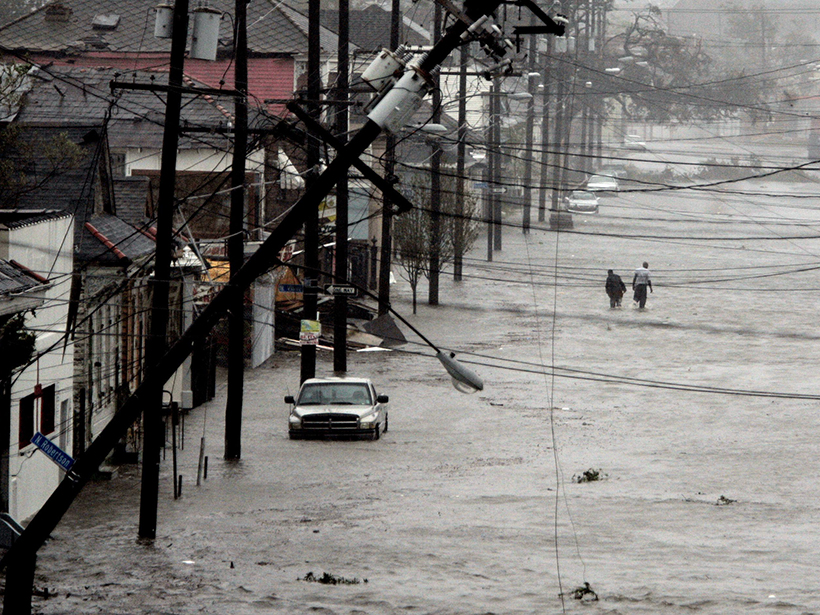Source: Earth’s Future
The global mean sea level currently measures 77 millimeters higher than in 1993 when the satellite sea level record began. According to the Fifth Assessment Report from the United Nations’ Intergovernmental Panel on Climate Change, the global mean sea level is expected to continue rising throughout the 21st century. With 126 million Americans—40% of the total population of the United States—living along the coasts, rising seas could cause widespread property and socioeconomic damage in the coming century.
Coastal communities require adaptation and mitigation strategies for both frequent, minor flooding and extreme, high-water events (i.e., major flooding). Yet community responses differ for each type of flooding: Regular low-grade floods inflict chronic, cumulative damages, whereas extreme floods create substantial, acute losses. One challenge of strategic planning is that many statistical models struggle to simultaneously characterize both minor and major flood events resulting from rising sea levels.
To address this challenge, Ghanbari et al. developed a new model to facilitate a nonstationary analysis of coastal flood frequency. The mixture probability model simultaneously evaluates minor and major flooding under higher sea levels. The study incorporated data from 68 tidal monitoring locations around the country to estimate the type and frequency of flooding throughout the contiguous United States for both the present and future. The study also reports on flood exposure for 20 coastal cities.
The authors found that, generally, flood return periods shorten as sea level rises. For example, if sea levels climb by 15.24 centimeters, a 500-year flood will become a 10-year flood along the Pacific coasts. Throughout the country, coastal regions will experience increases in minor and major flood frequency if sea levels continue to rise. If sea levels rise by approximately 61 centimeters, the authors report that the majority of coastal communities will experience major floods multiple times (2–6 days) and more than 150 days of minor flooding per year, unless adaptation and mitigation strategies are adopted to increase flood thresholds in coastal cities.
The study found that not all regions would flood similarly in response to higher sea levels. The Pacific coast would see the most significant amplification in major flood frequency, followed by the southeast Atlantic coastline. The Gulf of Mexico and northeast Atlantic regions, however, would experience more frequency amplification in minor floods. Of the 20 cities the study assessed, the authors found that New York City would experience the highest increase in both minor and major flooding; Miami had the second-highest exposure.
The study represents a new approach for assessing flood risks associated with sea level rise and highlights the importance of planning for both chronic and acute flooding. The results offer actionable information to decision-makers in coastal communities throughout the United States. (Earth’s Future, https://doi.org/10.1029/2018EF001089, 2019)
—Aaron Sidder, Freelance Writer
Citation:
Sidder, A. (2019), As sea levels rise, expect more floods, Eos, 100, https://doi.org/10.1029/2019EO122097. Published on 03 May 2019.
Text © 2019. The authors. CC BY-NC-ND 3.0
Except where otherwise noted, images are subject to copyright. Any reuse without express permission from the copyright owner is prohibited.

